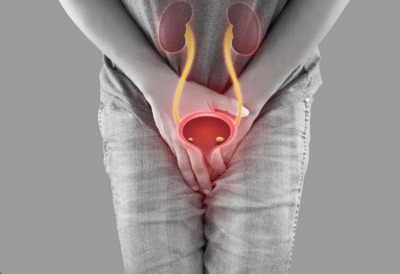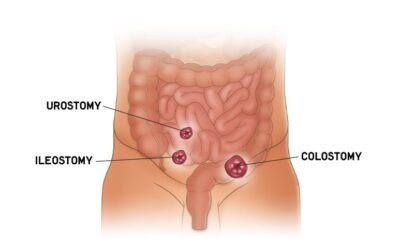Stoma Care
Post Stoma Surgery: What to Expect and How to Navigate Recovery
Guiding You Through the Early Stages of Life After Stoma Surgery
Facing stoma surgery can be a challenging journey, and understanding what to expect afterward is crucial for a smooth recovery. In this comprehensive guide, we’ll walk you through the post-stoma surgery experience, from the immediate aftermath to getting back to your daily routine.
Immediate Post-Surgery: What Will My Stoma Look Like?
Immediately after your stoma operation, you may notice significant changes in your abdominal area and the appearance of your stoma.
Here’s what you can expect:
Swelling:
Both your abdomen and stoma will likely be swollen during the first few weeks after surgery. This swelling is entirely normal and should not cause concern.
Oozing and Stitches:
It’s common for your stoma to ooze blood during the initial days. Additionally, you may have stitches around the stoma. These stitches could be either dissolvable or require removal by your stoma nurse a couple of weeks after surgery. Over the next 2-3 months, your stoma size will gradually reduce.
Monitoring Bag:
You will most likely have a large, clear bag covering your stoma immediately after surgery. This allows your surgeon and specialist nurses to monitor its size, shape, and output.
Managing Pain and Discomfort
Pain management is a critical aspect of your postoperative care. Here’s what you can expect and how to manage it effectively:
Pain Relief Options:
Your surgeon or anaesthetist should have discussed postoperative pain relief options with you during your pre-op assessment. Patient-controlled analgesia (PCA), which provides intravenous pain relief via a pump with a button, is a common choice. These pumps are designed to prevent overdosing, making them a safe and effective option.
Alternative Pain Relief:
In some cases, you may be offered an epidural to manage pain or receive oral pain relief. The priority is to ensure your comfort, and the hospital team will work to achieve this.
During Your Hospital Stay
Your hospital stay duration depends on the type of stoma surgery you underwent but typically ranges from three to 10 days, provided there are no complications. You will not be discharged until your stoma has begun functioning correctly, and your medical team is satisfied with your progress.
Learning to Change Your Pouch
Around the second or third day after surgery, your stoma nurse or Colorectal Nurse Specialist (CNS) will provide training on cleaning your stoma and changing your pouch. They will introduce you to various pouch types and help you determine the most suitable one for your needs. Additionally, they will discuss any additional products like adhesive remover sprays, barrier sprays, strips, or pastes that may be necessary. Every individual’s routine is unique, so don’t hesitate to jot down any questions you have during your training sessions.
Diet and Nutrition
Initially, after stoma surgery, you will be limited to consuming fluids as your bowel temporarily “sleeps” following the operation. In some cases, a tube may be inserted through your nose into your stomach to prevent vomiting. As your bowel starts to awaken, you will gradually transition to soft and easily digestible foods. Most individuals return to a normal diet within a few days.
You may have heard of certain foods to avoid with an ostomy, including those with tough outer skins like sweetcorn, popcorn, and potato skins. While these foods may be more challenging to digest and could potentially lead to blockages, the reaction to specific foods varies among individuals. It’s advisable to experiment with different foods in moderation to gauge your personal tolerance.
Getting Mobile
Early mobility is essential after ostomy surgery. It aids in your recovery by promoting full lung function, reducing the risk of chest infections, and accelerating bowel function. You will be encouraged to sit in a chair on the same or following day after surgery and start walking as soon as possible. Initially, you might feel a bit fatigued and unsteady on your legs, but regular walks will help regain your strength.
When Will Your Stoma Start Functioning?
Your stoma may take a few days to produce output as your bowel may initially be in a state of shock following surgery. Being mobile and consuming small, regular meals can assist in the process. You may experience gas pains or colic initially, which can be managed with pain relief or remedies like peppermint tea. Once your stoma begins functioning, the output may be inconsistent, including periods of loose stools or constipation. These fluctuations are normal and tend to stabilize over the next few weeks.
Back at Home: What to Expect
As you return home after stoma surgery, there are some important aspects to consider for a smooth transition and recovery:
Physical Recovery:
You may experience fatigue and weakness following surgery, and your abdomen may remain tender. While rest is essential, staying mobile and gradually resuming daily activities is equally important. Expect the full recovery process to take approximately 8 weeks.
Emotional Support:
Understand that coping with stoma surgery can be emotionally challenging. It’s natural to feel overwhelmed, and it’s okay to seek support from others who have experienced similar journeys. Online communities like the Bladder and Bowel Community Support Group on Facebook can offer valuable peer support and a platform to ask questions.
Getting Active:
Short, regular walks will help you regain strength and build confidence in resuming your daily routine. The general guideline for resuming activities like driving is around 6-8 weeks, but consult with your colorectal team and insurance company for specific advice.
No Heavy Lifting:
Avoid heavy lifting for the first 8 weeks after surgery to prevent potential complications such as hernias.
Bathing:
You can take baths or showers with or without your stoma bag. However, it’s important to be cautious with bath products that may leave residues on your skin, potentially affecting the wafer’s adhesive. If you choose to bathe or shower with your bag on, consider using a sticker to cover the filter to prevent clogging.
Stoma Bag Changes:
You should become confident in performing bag changes on your own once you’re back home. Regularly measuring your stoma size is important as it continues to shrink during the healing process. A secure seal around the stoma is essential to prevent leaks and skin irritation.
In conclusion, the journey of life after stoma surgery involves both physical and emotional aspects. By understanding what to expect and being prepared for the challenges and triumphs that lie ahead, you can navigate this path with confidence. Remember, you’re not alone on this journey, and there is a supportive community ready to assist you in every step of the way.


